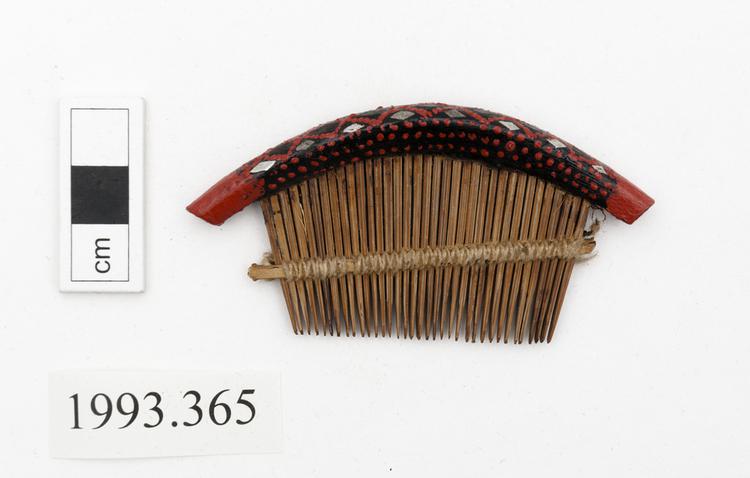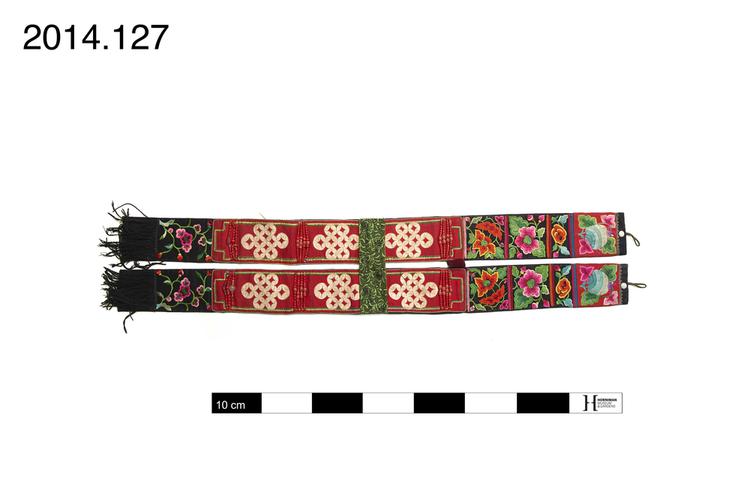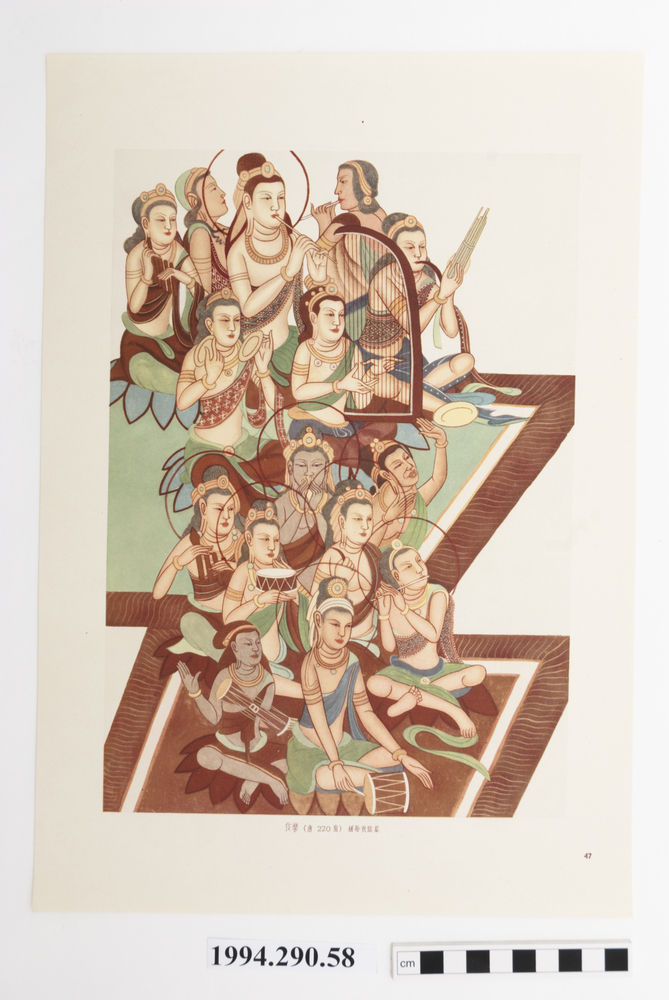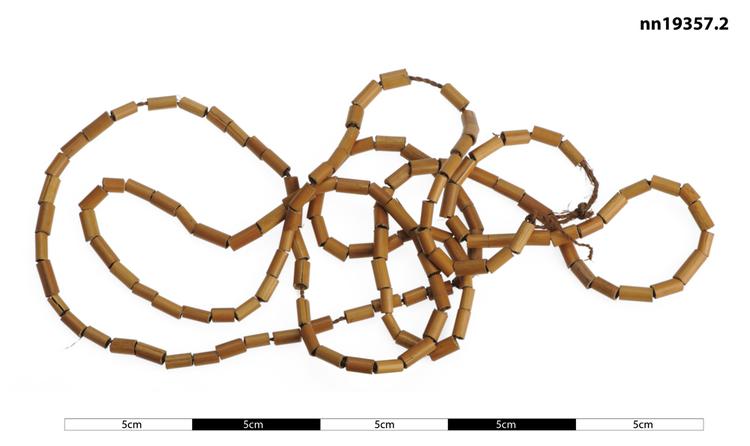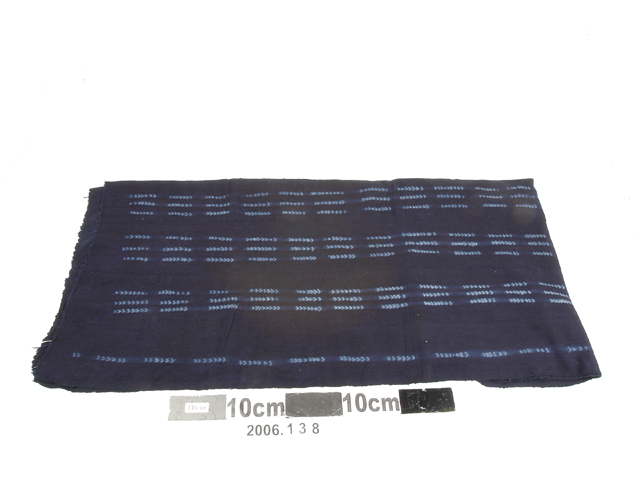
Textile decorated with bands and geometric patterns made up of chains of small white C-shapes on a dark blue background.
Indigo cloth is most often associated with Dogon speaking peoples. The practice of dyeing with the local indigo plant has been dated to over 1,000 years (much before it had arrived in Europe in the 17th and 18th centuries). Natural indigo dye processes used to be carried out by all ethnic groups, nowadays, it is has become more seldom and restricted to the Dogon speaking people. In the urban areas, you can see the natural plant combined with chemical dyes. The process of dyeing with indigo begins with the natural ‘balls’ of indigo, from the north of Mali or from the Dogon region. The leaves are crushed with a pestle and mortar to make a paste which is shaped into a ball and left to dry (they can keep like this for several years without losing their fixative properties). Four or five of these balls are mixed with 50 litres of water, stirred and left to rest for six or seven days (potash and hydrosulfate are added each day and the whole mixture stirred for 10 minutes or so). By the seventh day, the dye is tested and the fabric soaked for 10-15 minutes each – the process is repeated three times before being rinsed in water and hung to dry.



